

Real Madrid turned legend into myth in the 1950s. The Club celebrated its 50 year anniversary and signed Di Stéfano during this magnificent decade. The arrival of the Argentine player was an inflexion point for the Whites. The team won their first League in 21 years and Bernabéu and Saporta played key roles in the establishment of the European Cup, which Real Madrid won five years in a row. The crowning moment to the decade was the Whites’ victory in the first Intercontinental Cup.
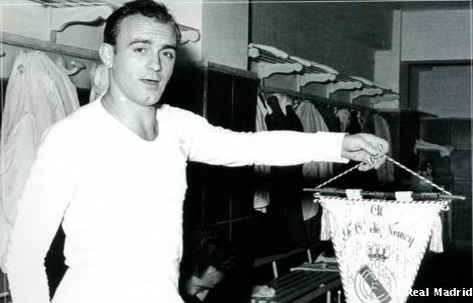
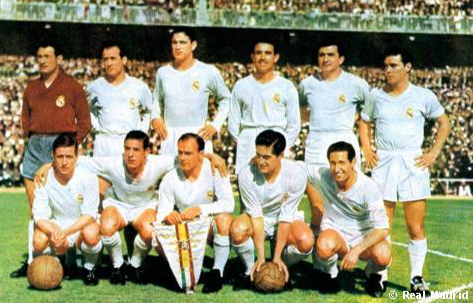
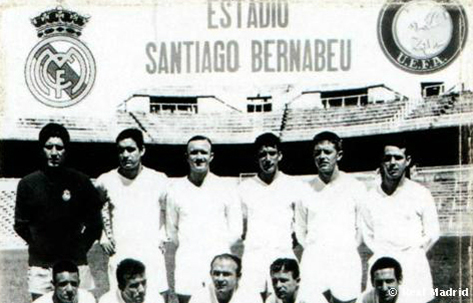
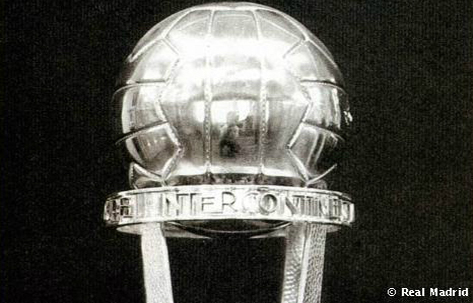
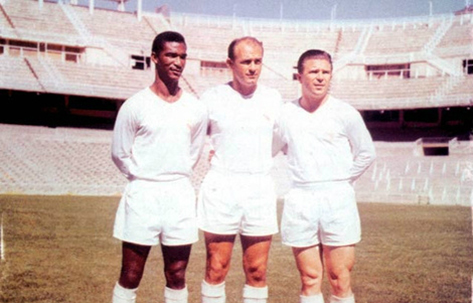
BRILLIANT GOLD WEDDING ANNIVERSARY CELEBRATION
Santiago Bernabéu’s administration spared no money and efforts to commemorate the Club’s 50th anniversary. A magnificent football tournament was held, but the Club didn’t forget about other sports and organised basketball, handball, chess, horse racing, wrestling and bull fighting competitions to celebrate their Golden Wedding Anniversary. Two extravagant Madridistas, Benito Pico and Manolo Suárez, were in charge of organising the festivities.
SAPORTA, BERNABÉU'S GREAT SIGNING
General Querejeta, President of the Spanish Basketball Association advised Bernabéu to sign Raimundo Saporta. The latter joined the Club after he brilliantly organised the basketball championship that took place during the 50th Anniversary celebration. From then on, he became increasingly important for Bernabéu thanks to his excellent management and diplomacy skills. Saporta expanded the Club’s reach and became its “brain”.
THE SOAP OPERA THAT WAS DI STÉFANO'S SIGNING
Alfredo Di Stéfano met Santiago Bernabéu in March 1952 during the anniversary celebrations and his signing for the Club resembled a soap opera in which Santiago Bernabéu, Raimundo Saporta, Enrique Martí, Barcelona President and Technical Secretary José Samitier, Millonarios President Alfonso Senior, River Plate President Enrique Pardo and Spanish FA Board Member Armando Muñoz Calero played leading roles. Bernabéu’s strategy and Martí’s mistakes made Di Stéfano sign for Real Madrid.
DI STÉFANO'S HECTIC DEBUT
On 23 September 1953, Alfredo Di Stéfano, his wife and daughters arrived in Madrid from Barcelona at 10:30 am. As soon as he entered Madrid’s Atocha Railway Station, the player went to the Club, passed his medical exam, had lunch, left his family at the Emperatriz Hotel, met his new teammates in the dressing room and played his first game at 3:30 pm. It was a friendly game against Nancy won by the Whites 4-2. Di Stéfano scored his first goal as a Real Madrid player on the 67-minute mark.
THIRD LEAGUE TITLE, 23 YEARS LATER
The first consequence of Alfredo di Stéfano’s signing was winning the 1953/54 League. The Club hadn’t won the title since the 1932/33 season and euphoria spread throughout Madridismo. Twenty-one years later, fans could sing the victory chant again thanks to coach Enrique Fernández.
CHAMARTÍN STADIUM IS RENAMED AS SANTIAGO BERNABÉU STADIUM
In the 4 January 1955 General Assembly, Messrs. Zapater and Caso proposed changing the name of the stadium to Santiago Bernabéu. The proposal was approved and the President reluctantly accepted this honour as it was the will of the Club’s voting members.
DRIVING FORCE BEHIND THE CREATION OF THE EUROPEAN CUP
Santiago Bernabéu was one of the people to enthusiastically embrace the proposal of Gabriel Hanot -Chief Editor of L’Equipe- of creating a European tournament to determine which was the best team in the continent. On 2 April 1955, representatives of the most prestigious football clubs in Europe heeded the call of L’Equipe Director Jacques Goddet and met at the Ambassador Hotel in Paris. Bernabéu’s leadership skills amazed everyone at the meeting.
THE EUROPEAN LEGEND STARTS IN GENEVA
Real Madrid made their European Cup debut in the competition’s first edition on 8 September 1955 in Geneva against Servette. They won 2-0 thanks to goals by Muñoz and Rial.
FIRST EUROPEAN CHAMPIONS
After eliminating Servette and complicated sides like Partizan Belgrade and Milan, Real Madrid defeated Stade Reims in the Paris final 4-3, coming back from a 2-0 score in favour of the French side. The trophy was a 23.2 kg, 66 cm tall amphora. The 13 June 1956 victors were: Juan Alonso; Atienza, Marquitos, Lesmes; Muñoz, Zárraga; Joseíto, Marsal, Di Stéfano, Rial and Gento.
THE MOST POWERFUL LIGHTING SYSTEM IN THE WORLD
On 18 March 1957, the Club used the new artificial lighting system in Bernabéu for the first time in a clash with Brazilian side Recife. 480 lights gave 1,500 lux, much more power than other European stadiums, such as Parc des Princes in Paris -130 lux- old Wembley -140 lux- and Barcelona’s Las Corts -350 lux. 70,000 people saw how Real Madrid defeated Recife 5-3 in new light.
TWO-TIME EUROPEAN CHAMPIONS IN BERNABÉU
On 30 May 1957, 125,000 fans witnessed how Real Madrid were crowned European champions for the second time running in Santiago Bernabéu after defeating Fiorentina. The Italian side’s catenaccio was responsible for the 0-0 score at the end of the first half. The draw was kept on the score until the 70-minute mark, when Di Stéfano scored from a penalty that came from a tackle on Mateos. Six minutes later, Gento netted a spectacular lob that went over keeper Sarti and Real Madrid eventually won the match 2-0. Real Madrid’s starting line-up was as follows: Juan Alonso; Torres, Marquitos, Lesmes; Muñoz, Zárraga; Kopa, Mateos, Di Stéfano, Rial and Gento.
DI STÉFANO IS AWARDED HIS FIRST BALLON D'OR
Alfredo Di Stéfano received his first Ballon d’Or from Jacques Ferrán, Director of France Football, on 23 January 1958. The ceremony was held in Santiago Bernabéu before the Real Madrid-Sevilla European match scheduled for the day. Di Stéfano scored four of the eight strikes Real Madrid tallied against the Andalusian side. Di Stéfano was awarded the Ballon d’Or again in 1959.
THREE-TIME EUROPEAN CHAMPIONS
Real Madrid became European champions for the third time at Heysel Stadium in Brussels after defeating Milan in overtime 3-2. The extraordinary match saw both teams showcasing professional pride. Gento’s goal in overtime crowned the Whites as champions.
EUROPEAN KINGS AGAIN
Madridismo triumphed again in the fourth European Cup final. The match was held in Stuttgart and Real Madrid faced an old foe: Stade Reims. The Whites earned a 2-0 victory thanks to goals by Mateos and Di Stéfano and kept their European crown. Real Madrid were already considered as the best team in Europe.
FIVE-TIME CHAMPIONS
On 18 May 1960, Real Madrid won their fifth consecutive European title in Glasgow, a feat that as of today stands unrivalled. Hampden Park saw how the Whites defeated Eintracht Frankfurt 7-3, thanks to four goals by the unforgettable Puskas and three by Di Stéfano.
FIRST INTERCONTINENTAL CUP CHAMPIONS
Libertadores Cup champions Peñarol Montevideo played against European champions Real Madrid in the first Intercontinental Cup. The first leg was held in the Uruguayan capital and ended with a 0-0 draw. The second leg took place in Bernabéu on 4 September 1960 and Real Madrid won 5-1. The starting line-up was as follows: Domínguez; Marquitos, Santamaría, Pachín; Vidal, Zárraga; Herrera, Del Sol, Di Stéfano, Puskas and Gento.